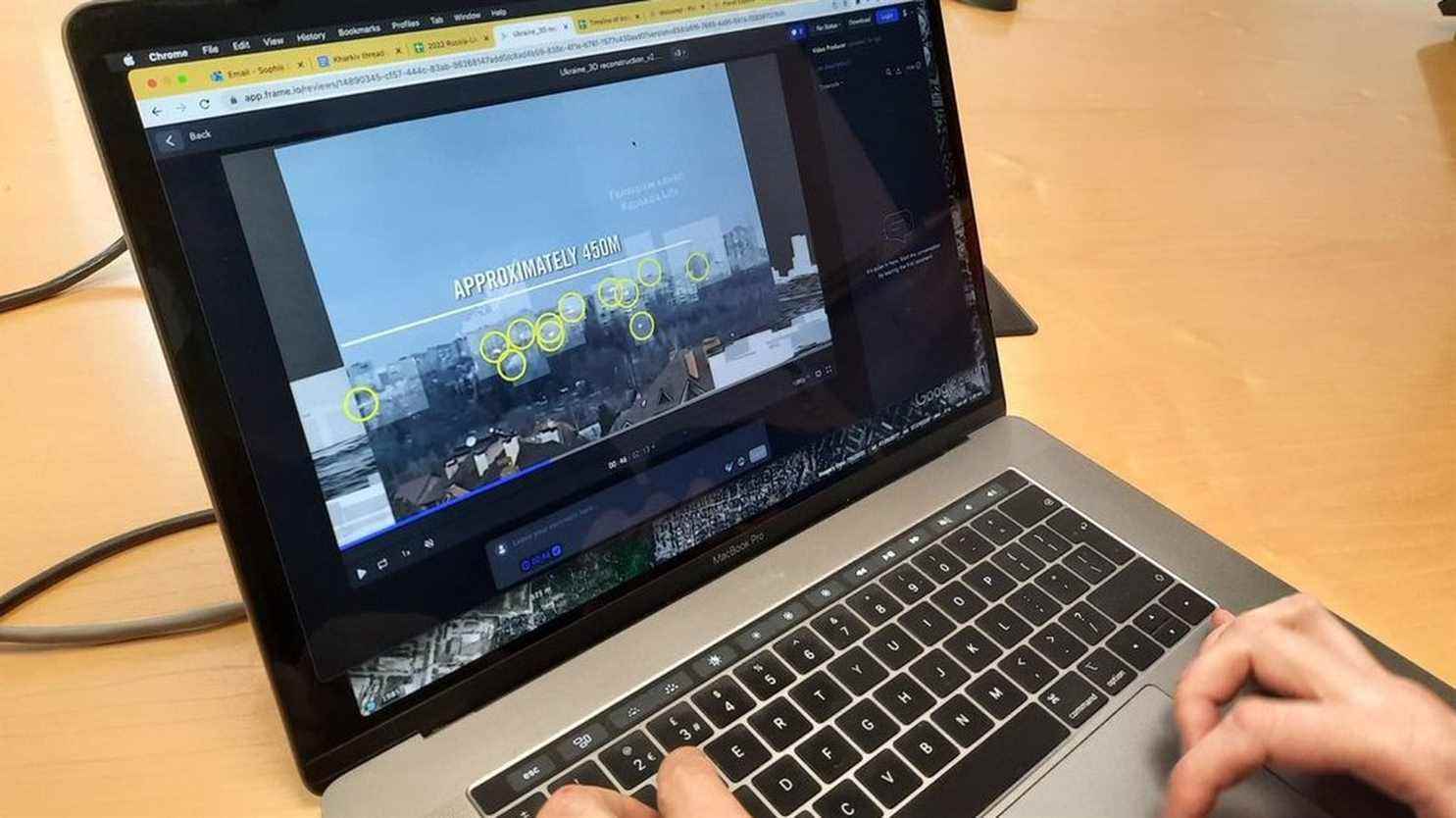Collecting evidence in a country where fighting is raging is an extremely difficult task. Non-governmental organizations (NGOs), such as Amnesty International, sent investigators to Ukraine for ten days to document the use of prohibited weapons and demonstrate the existence of attacks deliberately targeting civilians. These two scenarios fall into the category of war crimes.
>> War in Ukraine: follow the situation live
However, most of this collection of evidence is done remotely, thanks to what are called “open sources”: photos, videos, satellite images available on the Internet. This is the work carried out in particular in the evidence laboratory of Amnesty International, based in London. In a modest brick building near Russell Square, two female investigators are in front of their computers. They scrutinize the smallest details of videos from Ukraine posted on social networks. They are permanently in communication with the other members of the laboratory scattered around the world, in Berlin, Paris for Europe, and Denver, Washington and Buffalo, in the United States.

In the team, the skills are complementary. There is in particular a weapons specialist, an expert in satellite images… They receive the support of many volunteers who are fluent in Russian and Ukrainian. “Here we are watching the video of an attack in northern Kharkiv. It dates from February 28explains Sophie Dyer, visual analyst. This video ends with a close-up of the street that shows the victims of this attack”. That day, the Russian army targeted a residential area in northern Kharkiv where residents were queuing for bottled water. Tap water is indeed not drinkable in Ukraine. Four people, including a child, died, 16 others were injured.
Sophie Dyer has collected all available photos, videos and satellite images. She modeled them in three dimensions to get an idea of the scale of the attack and the type of weapon used. “It is possible that cluster bombs were usedshe explains. Cluster bombs have a very wide impact area, which is why they cause so many victims in the city.”
To be certain that cluster bombs were used on February 28, Milena Marin, the director of the laboratory, sends the photos of the remnants of cluster munitions, taken by a witness on the spot, to one of the investigators from Amnesty, a weapons specialist. He first verifies that these images are authentic, that they correspond to the current war. In particular, he studies the metadata of these photos: date, time, even GPS coordinates. Then, the evidence laboratory tries to answer this essential question: who owns these cluster bombs? “There are codes or dates of manufacture on the weapons and sometimes, like here, they are visible”explains Milena Marin, zooming in on a remnant of submunitions found in Kharkiv. “Here for example we can read in small ’07/19′. It is a date of manufactureshe continues. So this weapon was made in 2019. The war between Russia and Ukraine is complex because Russia has sold weapons to Ukraine in the past. The problem is that we don’t always know who uses them.”
A friend of mine made this in Kharkiv next to his because that has been hit by this crap. Can provide more details confidentially. pic.twitter.com/Mjip8yp7pG
— Brandon’s subconsciousness (@DoctorOfRadost) February 28, 2022
In this specific case, investigators from the Evidence Lab studied weapons trade records and found that cluster bombs had not been sold by Russia to Ukraine since 2014. “This proves that it was Russia that used the cluster munitions we have in front of us”, concludes Milena Marin. However, cluster munitions are prohibited by the 2008 Oslo Convention and their use constitutes a war crime.
Another potential war crime, the bombing of the Mariupol theater, where hundreds of Ukrainians had taken refuge. Amnesty is collecting testimonies in Ukraine from survivors who fled the city. “They give us a lot of detailsexplains the director of the laboratory. They tell us where the soldiers were when the bombardment took place, at what time, on what date. They show us the pictures they took, pictures of weapons. We are analyzing them.”
>> testimonials. “I have a head injury, but I’m alive!” : a survivor of the bombed theater in Mariupol recounts

Once the war crime is documented, Amnesty International will send all this evidence to the International Criminal Court (ICC), which opened an investigation on March 2, 2022, but which does not have its own police means. The ICC therefore relies on the work of NGOs and national police who question Ukrainian refugees in their countries. States, such as Germany and Spain, have also opened their own investigation in the name of universal jurisdiction. But to judge war crimes, it is necessary to find the authors, the principals. And that’s the toughest job, says Eliot Higgins, founder of the investigative journal Bellingcat. For the record, Bellingcat revealed in 2014 that the missile that shot down Malaysia Airlines flight MH17 was fired by pro-Russian fighters in eastern Ukraine.
“It is very difficult to determine the responsibilitiesexplains Eliot Higgins. It is one thing to say that chemical weapons or cluster munitions have been used. It is much more complicated to find the originator. You need direct evidence, not just speculation.” Clearly, knowing which unit, which commander is at the origin of an attack. And for this, the investigators are unexpectedly helped by the social network TikTok. Russian soldiers used it massively at the start of the conflict, filming themselves with their weapons and their uniforms. They documented their movements. This is a very valuable database for those tracking war crimes in Ukraine.
